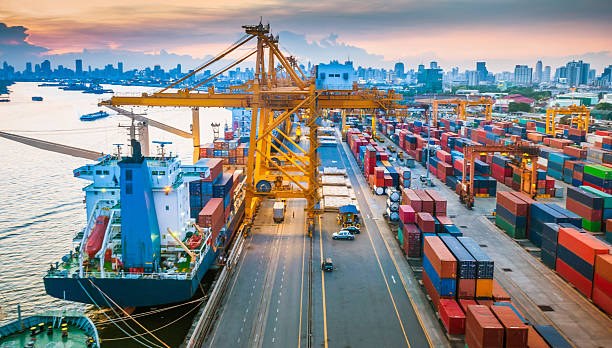How Does Delivered Duty Paid (DDP) Shipping Work?

Global business and consumer connections are made possible by international trade’s complex and dynamic environment. Identifying the obligations and expenses associated with shipping is vital to this complex web of transactions.
Let’s start with Delivered Duty Paid (DDP) shipping, an incoterm that creates the foundation for a smooth and practical experience with international trade.
Imagine that a seller assumes responsibility for managing customs clearance, assuring the safe delivery of products, and paying associated fees and taxes.
With decreased administrative requirements and cost certainty, purchasers can relax in the interim. But how exactly does DDP shipping operate?
The complexities of DDP shipping will be examined in this article, along with its history, the responsibilities of buyers and sellers, and the benefits and drawbacks of using this common incoterm.
Join us as we explore the DDP economy shipping world and solve global logistics puzzles.
Critical Aspects of DDP Shipping

- Delivery and Transport
The delivery of the goods to the predetermined location indicated in the contract is the seller’s responsibility under DDP rules.
This involves planning and organizing the actual delivery of the items to the buyer’s home or other specified delivery location and maintaining warehousing and logistic services. The goods must be delivered to the buyer promptly and safely, which is the seller’s responsibility.
- Customs Clearance
One of the essential features of DDP shipping is that the seller assumes responsibility for managing all customs processes and paperwork necessary to import the products into the buyer’s country and export them from the country of origin.
Preparing and submitting the required export and import paperwork, such as commercial invoices, packing lists, and customs declarations, are included in this.
The seller must adhere to all applicable customs regulations and procedures to ensure the items pass all required standards and inspections.
- Risk Transfer
With DDP delivery, at the point of delivery, ownership of the goods and risk of loss or damage pass from the vendor to the customer.
The risk associated with the items passes to the customer once they are delivered and in their possession.
It is essential that the buyer thoroughly examines and confirms the items’ condition while receiving the item. This is essential because there was a sharp increase of 780.5% in shipping fraud in 2021 as per the reports.
Any problems or damages should be notified immediately to the seller so that the rightful claim or reimbursement procedures can be started.

- Duties and Taxes
The fact that the seller oversees paying all required tariffs, taxes, and other fees related to the importation of the products is a significant benefit of DDP shipping. This means the buyer need not be concerned about expenses other than the predetermined DDP pricing.
The seller is responsible for calculating and paying all import taxes, customs duties, value-added taxes (VAT), and additional fees levied by the buyer’s nation.
This prevents any unforeseen financial obligations and gives the consumer a clear idea of the overall cost of the goods.

- Seller Responsibility
The seller is also accountable for acquiring any licenses or permits required for the exportation and importation of the products, which is another important feature of DDP shipping and warehousing and logistics services.
This includes assuring adherence to any particular rules or limitations set forth by both the seller’s and the buyer’s nations. By taking on this duty, the seller simplifies the procedure for the buyer, who can concentrate on obtaining and using the items without worrying about negotiating administrative obstacles.
The seller benefits from a smoother and more efficient international trade transaction due to their proactive approach in acquiring the necessary licenses or permissions.
Let’s now go into greater detail about the benefits and things to keep in mind for both sellers and buyers:
What Are the Various Incoterms? DDP vs. DDU vs. DAP
Incoterms encompass specific logistics terms, including acronyms such as DDP, DDU, and DAP, which can be perplexing. These terms hold significance in international trade, warranting clarity on their disparities.
DDP, or delivered duty paid, signifies that the seller assumes all costs and responsibilities, ensuring the package reaches its destination with duties pre-paid. Contrarily, delivered duty unpaid (DDU) places the onus on the recipient to settle duties upon the package’s arrival in the destination country.
DDU often leads to confusion as customers might be unaware of the impending duties, possibly resulting in order cancellations or returns due to unexpected costs. DDU recipients are usually contacted by customs upon package arrival and might need to retrieve it from the local post office.
Having said that, DDP is preferred for its transparent customer experience, as it incorporates all charges upfront. Merchants can decide whether to pass these costs to customers by adjusting product pricing or absorbing them. On the other hand, delivered-at-place (DAP) entails the seller bearing all expenses and risks during delivery.
In essence, comprehending the nuances among DDP, DDU, and DAP is pivotal in navigating international trade smoothly and mitigating potential complications arising from varying fee arrangements and customer expectations.
Advantages for Sellers
- Market access: By providing DAP shipping, vendors can draw clients from many nations and broaden their customer base.
- Simplified process: Exporting can be simpler for sellers by taking on the burden of customs clearance and duty and tax payment.
Advantages for Buyers
- Cost certainty: Buyers can see the actual cost of the goods thanks to DDP shipping. Buyers can plan and budget more effectively as all import-related expenses are already factored into the purchase price.
- Reduced administrative burden: Buyers can save time and effort by avoiding dealing with the paperwork and processes associated with customs.

Considerations for Both Sellers and Buyers
- Increased risk for sellers: Sellers take on more risk while delivering DDP because they are in charge of the products until the buyer receives them. Merchants must have adequate shipping insurance coverage to protect against loss or damage during transit. The shipping insurance market size was valued $27116.31 million in 2022 and is expected to grow at 11.17% by 2028.
- Import regulations and compliance: The import laws and specifications of the buyer’s nation must be kept up to date by the sellers. They must ensure that all required paperwork, such as certificates of origin or permits for particular products, is gathered and given to customs officials.
Conclusion
Finally, Delivered Duty Paid (DDP) shipping is an interterm that outlines the obligations and expenses related to global trade.
The seller assumes most of the responsibilities, such as transportation, customs clearance, and the payment of duties and taxes, under DDP rules.
For vendors, DDP shipping offers advantages, including market access and streamlined procedures, while for purchasers, it offers cost predictability and lessened administrative load.
Sellers, however, need to be aware of the higher risk and regulatory obligations related to DDP delivery.
Businesses may ensure seamless and effective shipping procedures and make knowledgeable judgments while engaging in international trade by understanding how DDP functions.

